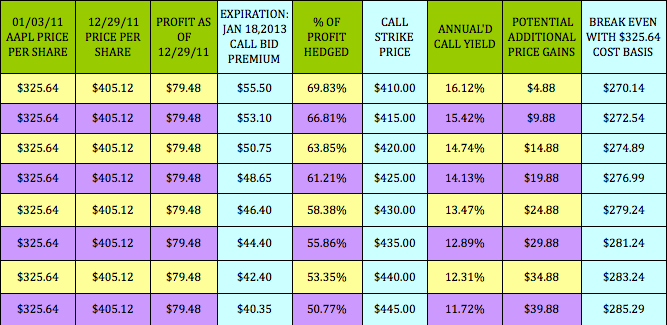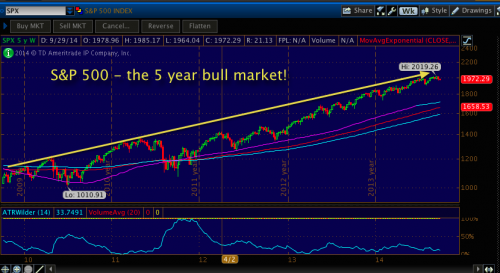3 Ways to Hedge Your Portfolio Gains
Post on: 30 Март, 2015 No Comment

Investing begins and ends with profits, but it should start with protecting your investment capital. Mathematics dictate that losses have a greater impact on total returns than gains. A 50% loss is covered only by a 100% gain; and a 33% loss to a portfolio can only be recovered with a 50% positive return.
Hedging your portfolio positions is something that should be done very carefully. The market allows for a few quick ways to hedge the downside in your portfolio should you want to lock in some profits, which is something you may want to consider given the early year run-ups and recent swings downward.
Here are Three Ways to Hedge your Portfolio:
1. Taking Off Risk – One of the greatest new products in finance are low volatility ETFs. These funds give investors exposure to stocks that are the least volatile of their corner of the market. Included in such funds are the kinds of companies I discussed in an article about stocks Warren Buffett might buy ; stocks with wide moats, strong financial positions, and product lines that sell just as well in recession as they do in periods of strong economic growth.A low volatility ETF is an easy way to get exposure to stock-like returns without the crazy up and downs. At several points in their history, low volatility funds have even outperformed the market, contrary to what academic finance would leave you to believe.
How to do it: swap stock funds or individual stocks for a low volatility ETF like PowerShares S&P 500 Low Volatility Portfolio (SPLV). This fund takes the 100 least volatile stocks from the S&P 500 and diversifies heavily. In bear markets, these are the stocks less likely to take a beating. Plus, youll enjoy dividend yields 40% higher than the S&P 500 index.
2. Bet Against the Market – Want to go short without going short? Theres always a short ETF waiting for your investment dollars. A short ETF tracks the opposite daily change in an index like the S&P 500.Unfortunately, levered funds dont make the greatest investments over the long haul because of their daily compounding. However, if held for only a short time period, they can quickly compound investors money in a sell-off.
How to do it: seek out an ETF like the ProShares Short S&P500 ETF (SH), which will return the opposite of the market performance each day. Investors should also consider a levered ETF for very short-term hedging positions – the UltraShort S&P 500 ETF (SDS) is an example – but be careful to keep only a small portion of your portfolio in such a levered trading vehicle.
3. Hedging with Bonds – Short-term bond funds make for a great way to protect your investment capital when the market turns against risk assets. In general, short-dated corporate and government debt is a safe place to store your investment capital without significant rate risk. Also, whereas stocks may drop like a rock in a correction, the flight to safety can lift bond prices and push down yields, upping the potential for capital gains even if stocks turn sour. This is a variation of the Barbell Investment Strategy that also works well for black swan events.

How to do it: Some of the best short-term bond funds are iBoxx $ Investment Grade Corporate Bond Fund (LQD), which is a highly-liquid ETF filled to the brim with high-quality debt issues. Another great choice is the iShares Barclays 1-3 Year Treasury Bond ETF (SHY), which is just as good as a money market account. The corporate bond fund will be more volatile than Treasuries as investors change their mind about risk assets due to higher risk of loss, longer duration, and greater yield.
Final Words on Hedging Your Portfolio
Nothing is perfect. Your hedge positions wont be either. However, theres nothing wrong with taking money off the table or protecting your portfolio from downside after experiencing large gains. Those who have a higher risk tolerance would like an inverse ETF as a hedge, otherwise, swapping more volatile stocks for low volatility funds or bond funds make for a great way to take some risk off the table when valuations exceed your comfort zone.
Do you hedge your portfolio gains? Are you considering it in this market?














